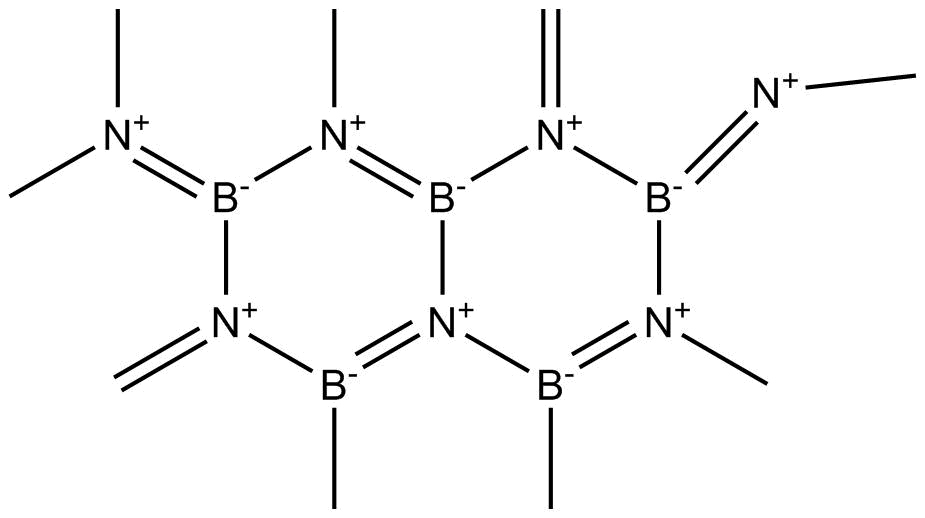
Inorganic graphite is:
(A).
(B)
(C)
(D)
Answer
493.8k+ views
1 likes
Hint: Inorganic graphite is an inorganic compound whose structure is like graphite with alternating atoms replacing the carbon atoms in hexagonal structure.
Complete step by step answer:
Boron nitride is sometimes referred to as ‘inorganic graphite’ because its structure is like graphite with alternating boron and nitrogen atoms replacing the carbon atoms in the hexagonal structure.
The structure of

Figure-The structure of Boron Nitride
Additional information:
Boron nitride is produced synthetically. Hexagonal boron nitride is obtained by the reacting trioxide
Similar to graphite, various molecules such as
Note:
Complete step by step answer:
Boron nitride is sometimes referred to as ‘inorganic graphite’ because its structure is like graphite with alternating boron and nitrogen atoms replacing the carbon atoms in the hexagonal structure.
The structure of

Figure-The structure of Boron Nitride
Additional information:
Boron nitride is produced synthetically. Hexagonal boron nitride is obtained by the reacting trioxide
Similar to graphite, various molecules such as
Note:
Latest Vedantu courses for you
Grade 10 | MAHARASHTRABOARD | SCHOOL | English
Vedantu 10 Maharashtra Pro Lite (2025-26)
School Full course for MAHARASHTRABOARD students
₹33,300 per year
Recently Updated Pages
Master Class 9 General Knowledge: Engaging Questions & Answers for Success

Master Class 9 English: Engaging Questions & Answers for Success

Master Class 9 Science: Engaging Questions & Answers for Success

Master Class 9 Social Science: Engaging Questions & Answers for Success

Master Class 9 Maths: Engaging Questions & Answers for Success

Class 9 Question and Answer - Your Ultimate Solutions Guide

Trending doubts
State and prove Bernoullis theorem class 11 physics CBSE

What are Quantum numbers Explain the quantum number class 11 chemistry CBSE

Who built the Grand Trunk Road AChandragupta Maurya class 11 social science CBSE

1 ton equals to A 100 kg B 1000 kg C 10 kg D 10000 class 11 physics CBSE

State the laws of reflection of light

One Metric ton is equal to kg A 10000 B 1000 C 100 class 11 physics CBSE




